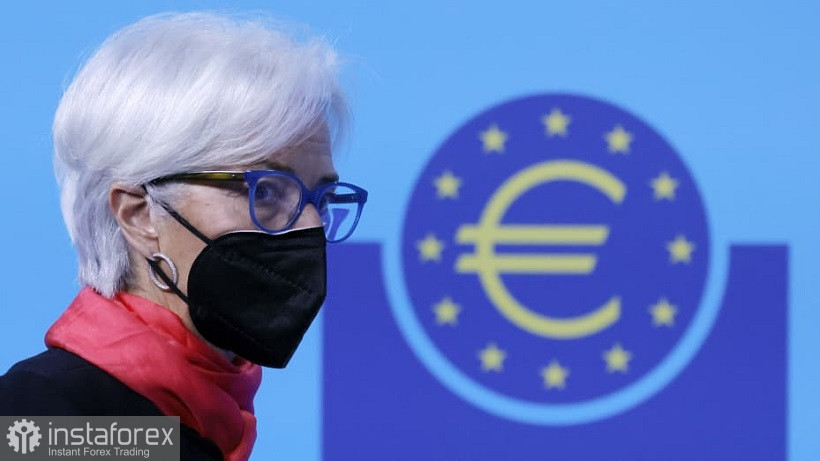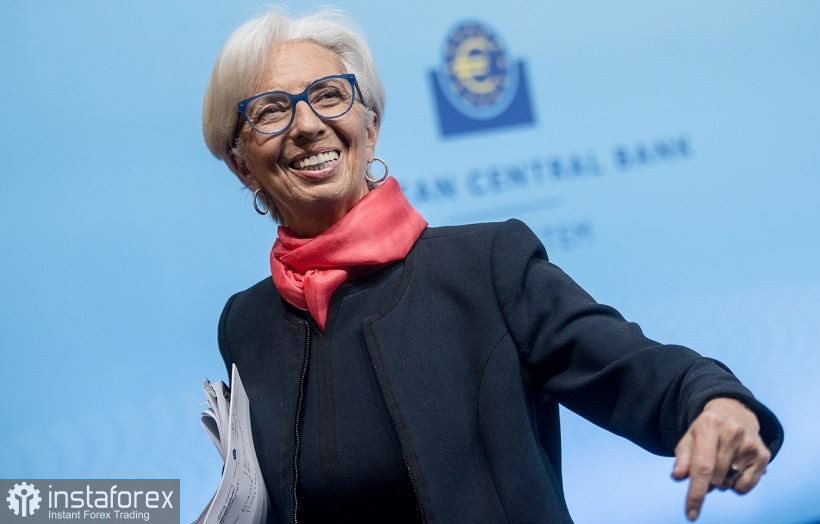Despite numerous doubts about the determination of the ECB, the regulator has nevertheless implemented a "hawkish" scenario - as far as possible in the current conditions. And although the Central Bank left all the parameters of monetary policy unchanged, ECB President Christine Lagarde's rhetoric surprised investors.
At a minimum, the European Central Bank has stopped ignoring the record increase in inflation in the eurozone. Back at the December meeting, Lagarde ruled out the option of tightening monetary policy in response to an unprecedented increase in inflation indicators. She, and many of her colleagues, insisted that this growth is temporary and is mainly due to the rise in energy prices. But on Thursday, the tone of her statements has changed.
Now the regulator is not so categorical: according to Lagarde, the members of the Board of Governors are considering all options for the development of events.

Figuratively speaking, Lagarde follows the path of her colleague from the U.S. Federal Reserve System. After all, Jerome Powell last year also went through the "stages of accepting the inevitable" - denial, anger, acceptance. However, I am most likely mistaken about anger, whereas Powell really passed the other stages.
Many experts of large banks sounded the alarm last summer, stating that the growth of American inflation is unprecedented. Residents of the United States began to actively spend the accumulated funds, faced with a limited supply (due to logistical problems). Plus, the rise in the price of energy carriers. For example, in December, inflation in the U.S. increased primarily due to the rise in prices of energy, housing, used cars, and trucks.
But Powell has been convincing everyone for several months that inflation will begin to fade at the end of 2021. And only in November last year, he dramatically changed his rhetoric, admitting that the rise in inflation in the United States is not "temporary." The rejection of this epithet had not only a symbolic meaning but was also quite practical. Powell promised that at the December meeting he would raise the issue of early curtailment of QE to his colleagues, and also discuss the issue of raising the rate in the coming months.
Subsequently, the "hawkish scenario" was overfulfilled: Powell not only completed the stimulus program ahead of schedule, but he also allowed an interest rate increase "at every meeting in 2022." The U.S. dollar reacted to these events accordingly: in the period from November to the end of January, the EUR/USD pair declined by more than 400 points.
Now it's the turn of the euro. Lagarde repeats some phrases and formulations after Powell almost verbatim. This, of course, is a coincidence – but if we talk about intentions, then we can say that Powell and Lagarde are gradually moving in the same direction. For example, on Thursday, the head of the ECB said that "the growth of inflation in the eurozone, apparently, will remain inflated longer than previously expected." The head of the Fed voiced a similar phrase in November last year in the Senate, thereby signaling a change in the Central Bank's exchange rate.
The European Central Bank, on the one hand, was not straightforward on Thursday. And yet traders caught the "hawkish" hints even in those words that were not said. For example, for the first time in a long time, Christine Lagarde did not say that "a rate increase is unlikely within 2022." In response to a corresponding question from a journalist, she stated that "the ECB does not make unconditional promises." At the same time, she added that the regulator will assess the situation at the March meeting when the updated forecasts of the Central Bank will be published. As Lagarde noted, "all decisions of the Central Bank will continue to depend on incoming macroeconomic data."

In general, Lagarde's entire speech can be abstractly compressed into a few sentences. Firstly, she positively assessed the current macroeconomic trends. According to her, the growth of the European economy should accelerate during the current year, while the situation in the labor market will only improve.
Secondly, she finally became concerned about the growth of inflation, abandoning the epithet "temporary growth." Lagarde noted that inflation will remain inflated "longer than expected," while the rise in energy prices "affects incomes."
Thirdly, she did not dramatize the situation related to the spread of coronavirus in Europe. Lagarde said that the European economy was less affected by the next wave of the pandemic, although GDP growth will be "restrained in the first quarter due to problems in supply chains.
And fourth, Lagarde did not refute rumors that the European regulator would decide to raise the interest rate this year. This is the case when silence was louder than words. In fact, she made it clear that this issue will be discussed at the March meeting.
Here is such a "hawkish set." It is noteworthy that after the publication of the accompanying statement, the EUR/USD pair renewed its daily low, dropping to 1.1267, however, following Christine Lagarde's press conference, the price jumped by more than 100 points and entered the area of the 14th figure. The hawkish expectations regarding the further actions of the ECB have significantly increased on the market - some experts have started talking about the fact that the regulator may raise the rate already at one of the summer meetings.
Of course, this round "on all points" remained for the euro. At the same time, EUR/USD longs still look risky. First, after such a sharp, impulsive growth, as a rule, a downside rollback follows. Secondly, the Nonfarm Payrolls report on Friday can strengthen the position of the U.S. currency. If they disappoint traders, buyers of EUR/USD will not only be able to consolidate above the resistance level of 1.1450 (the upper boundary of the Kumo cloud on the D1 timeframe), but also rise to the next price barrier – 1.1500 (the upper line of the Bollinger Bands indicator on the same timeframe).
 English
English 
 Русский
Русский Bahasa Indonesia
Bahasa Indonesia Bahasa Malay
Bahasa Malay ไทย
ไทย Español
Español Deutsch
Deutsch Български
Български Français
Français Tiếng Việt
Tiếng Việt 中文
中文 বাংলা
বাংলা हिन्दी
हिन्दी Čeština
Čeština Українська
Українська Română
Română

